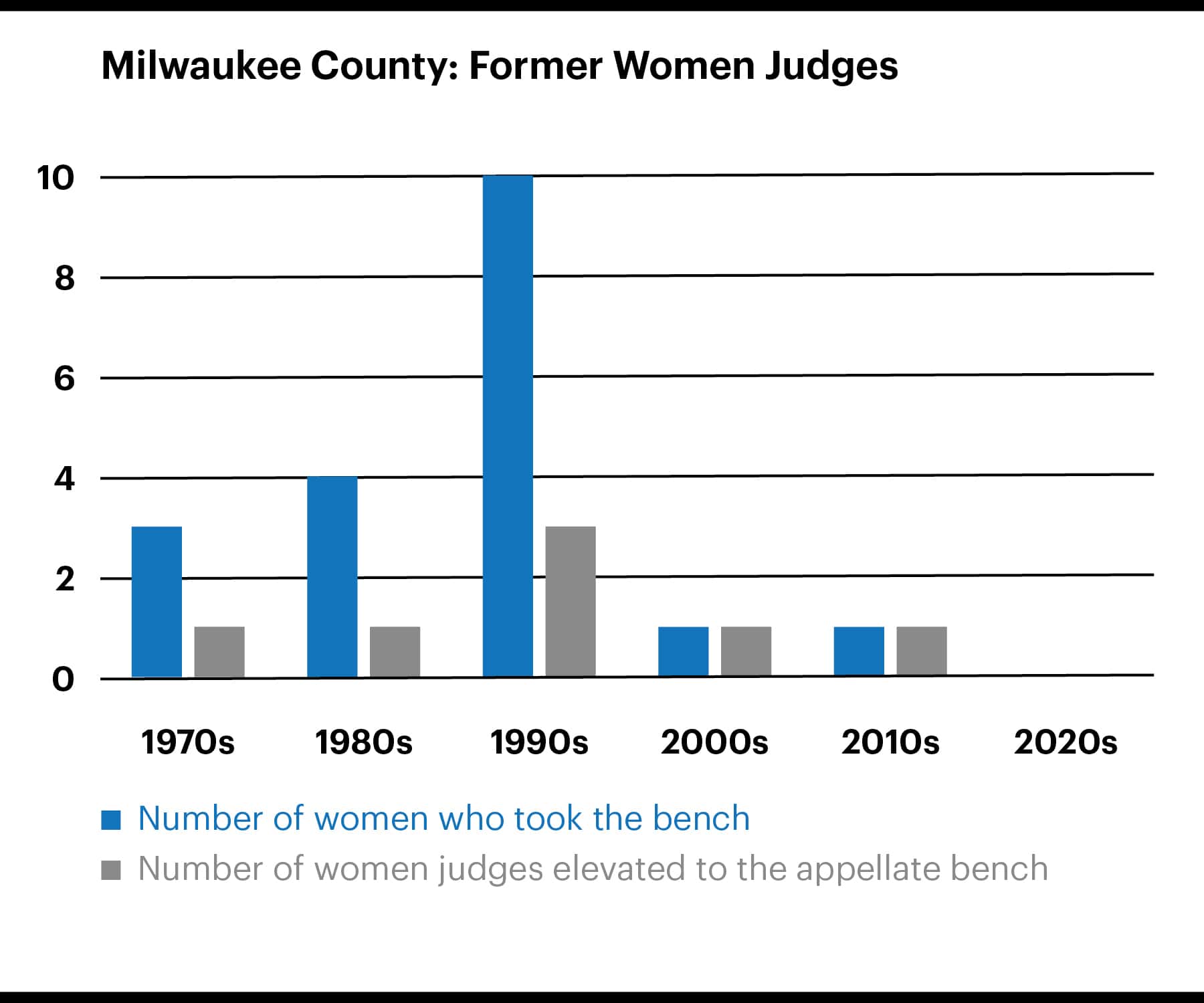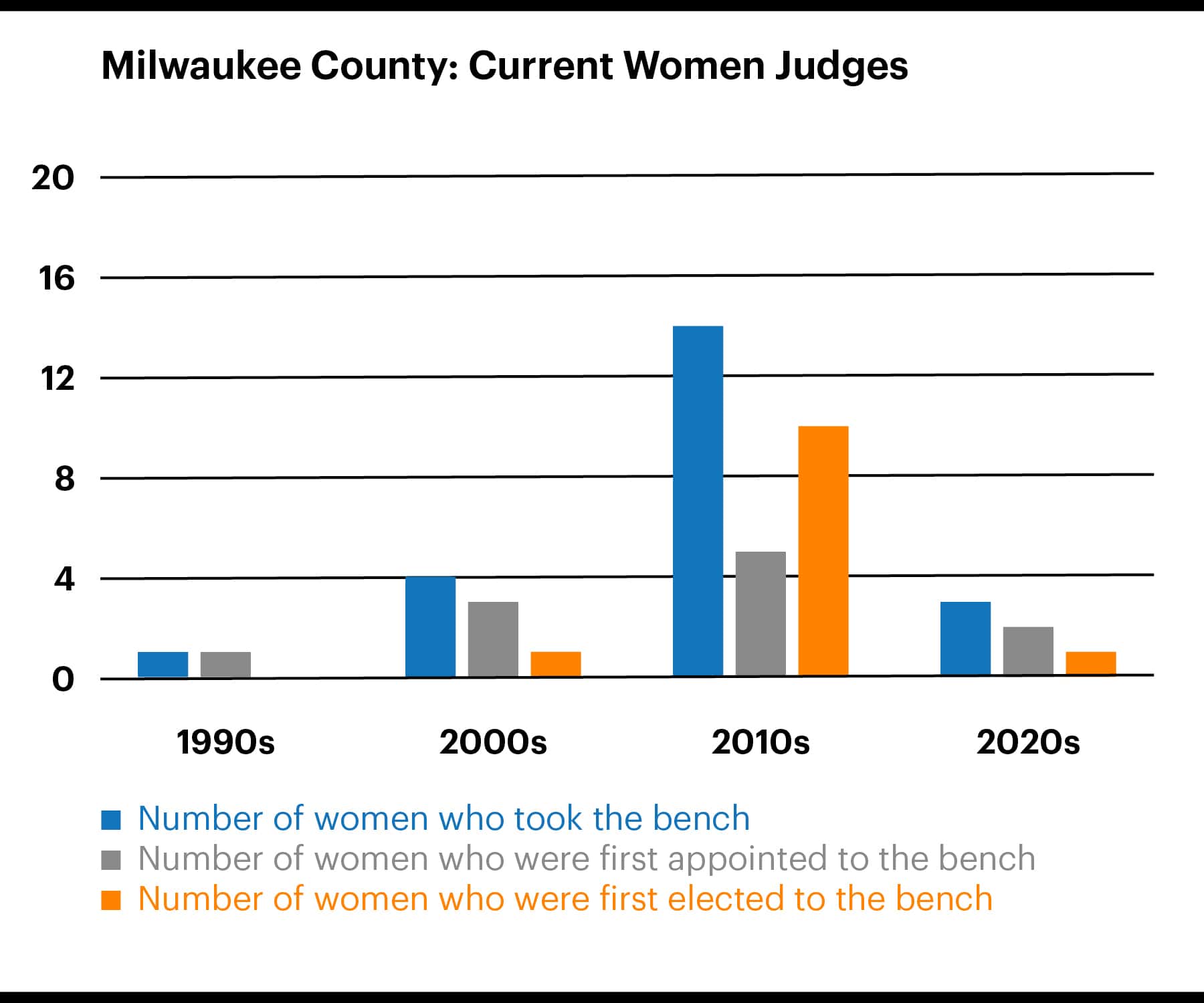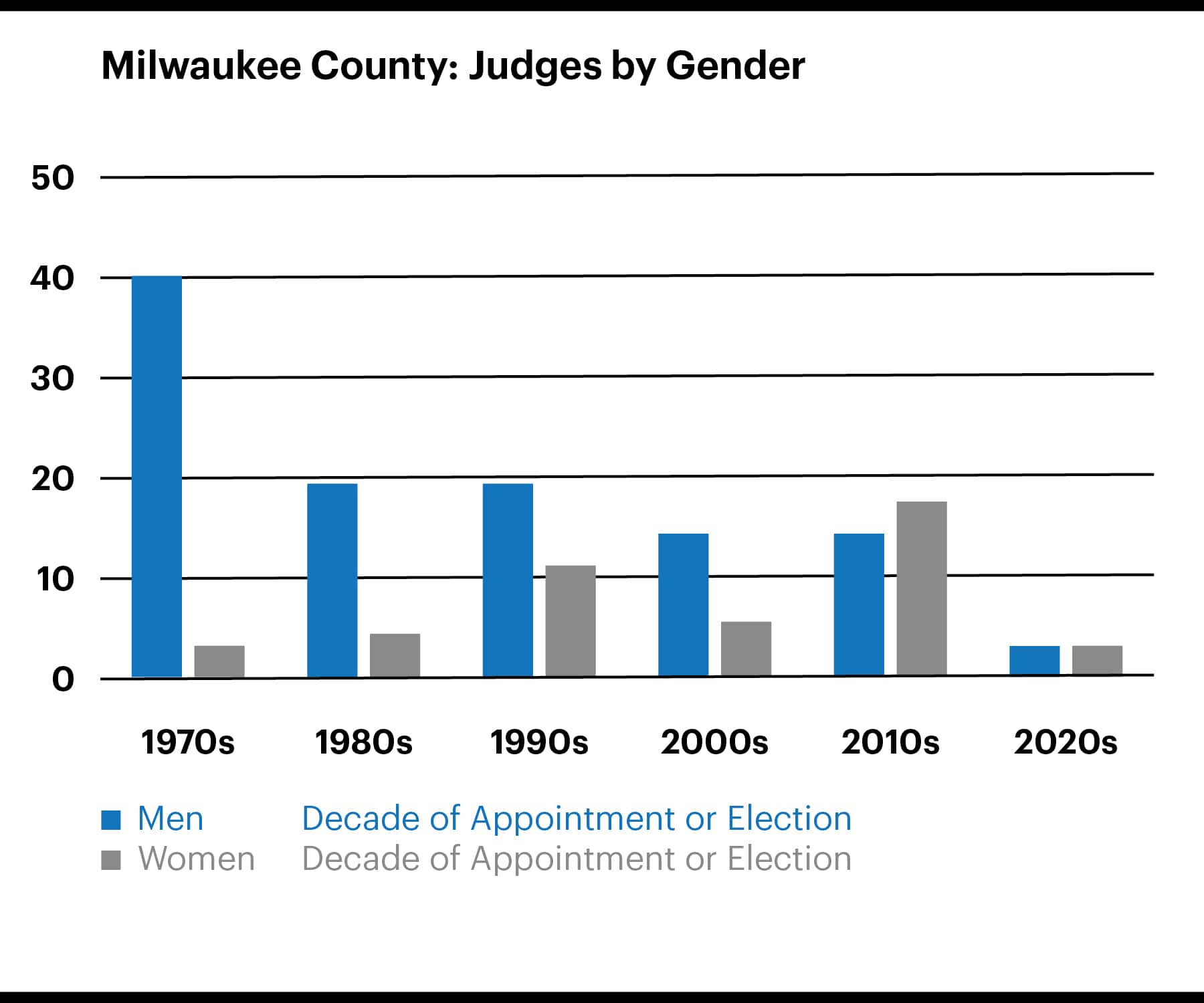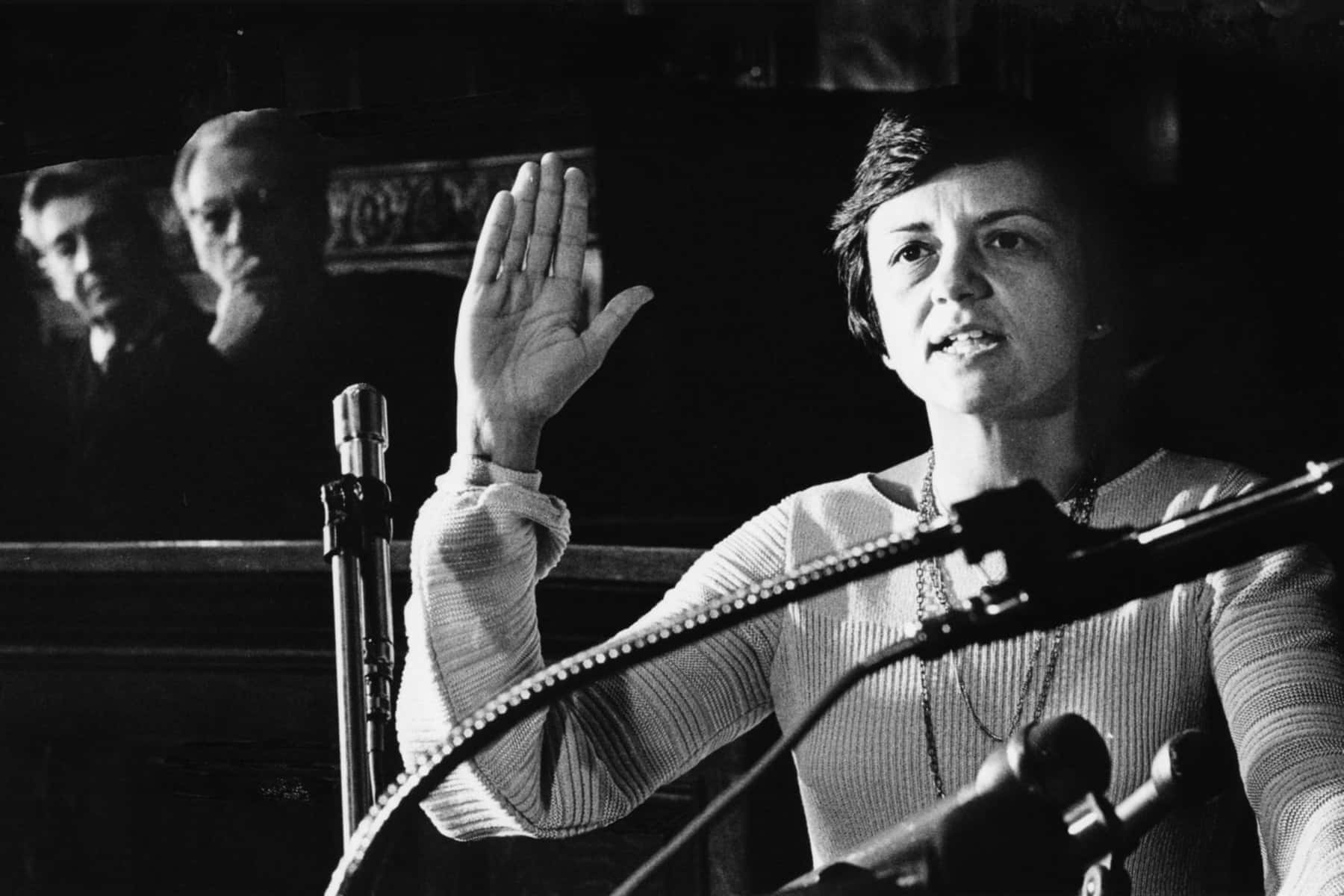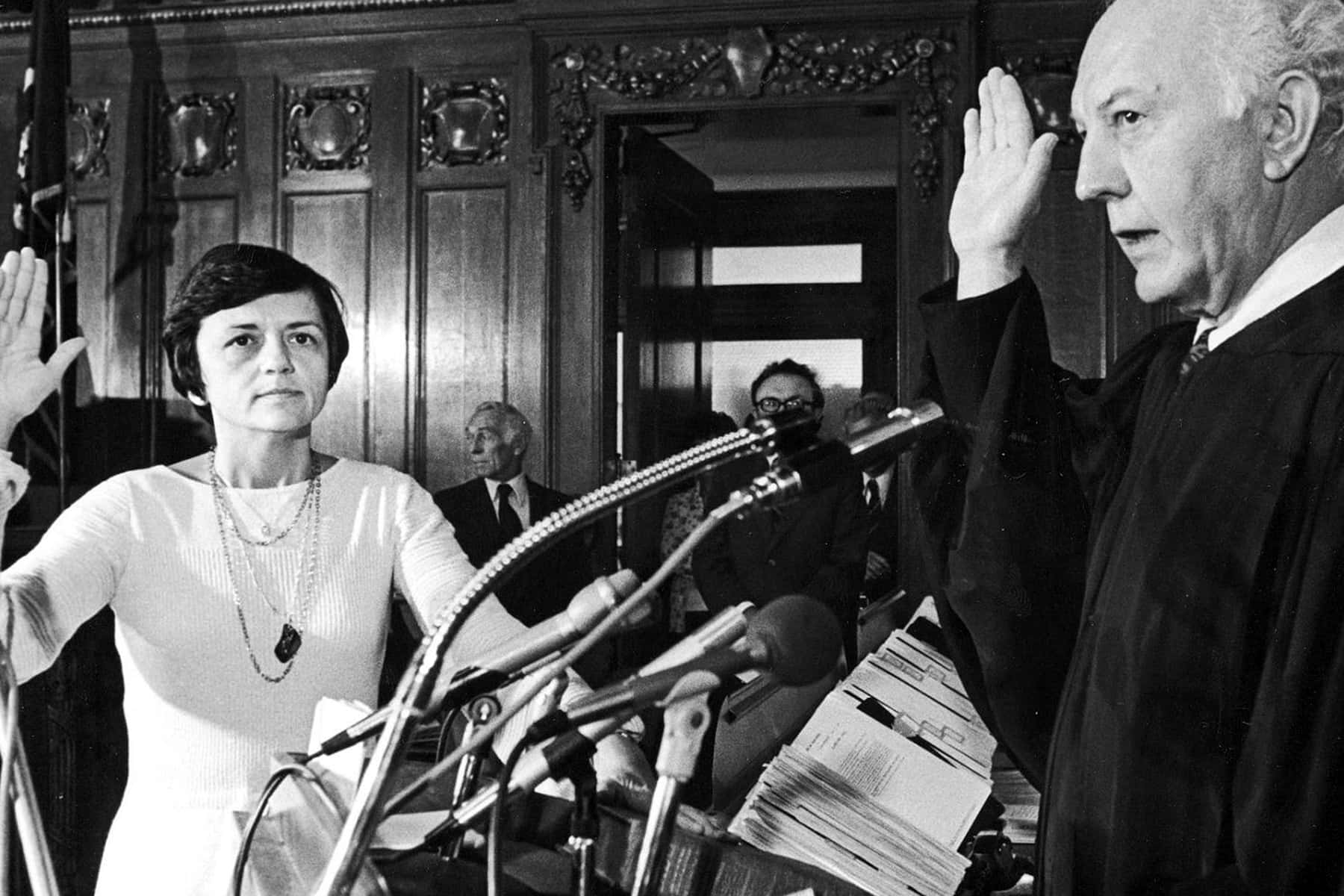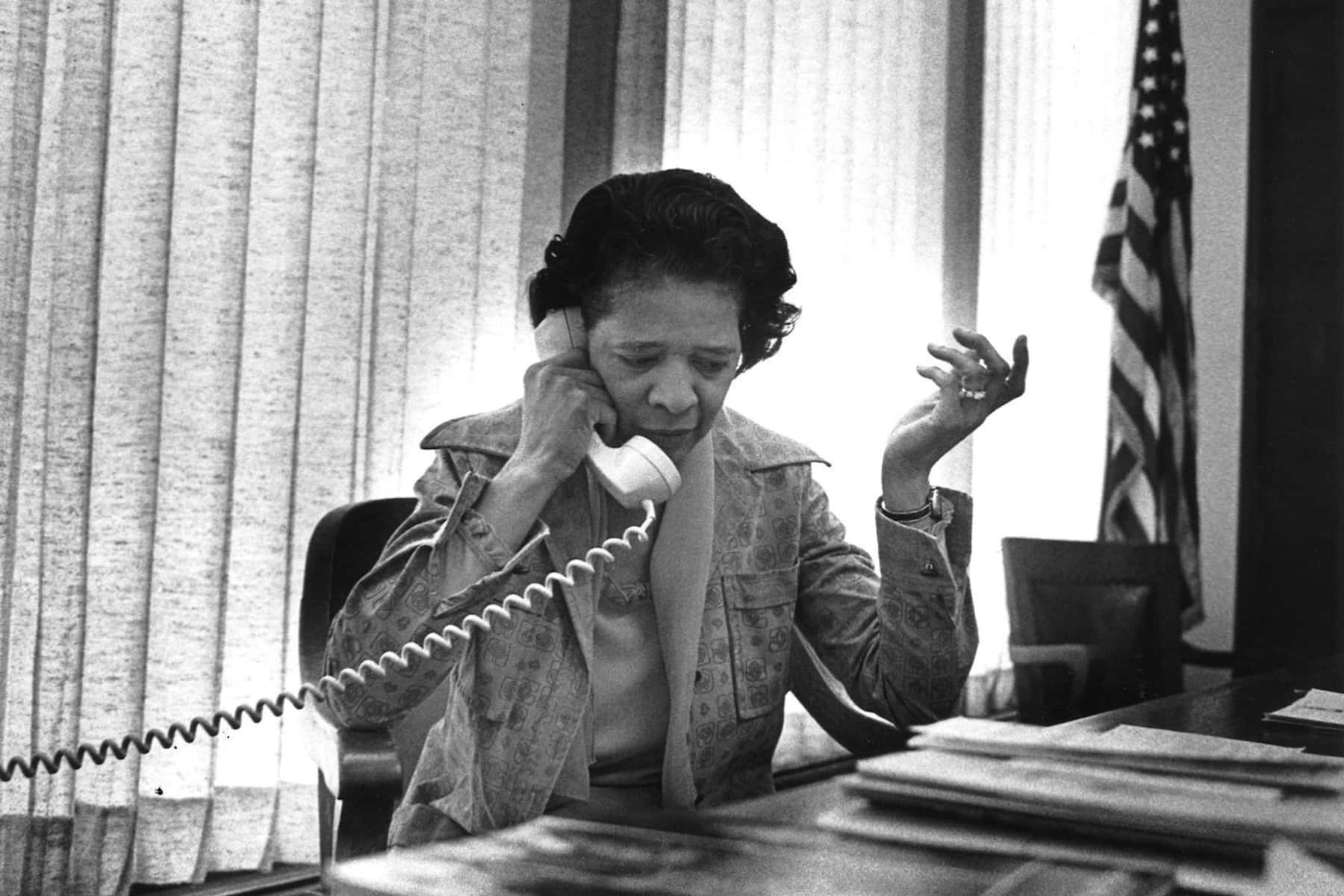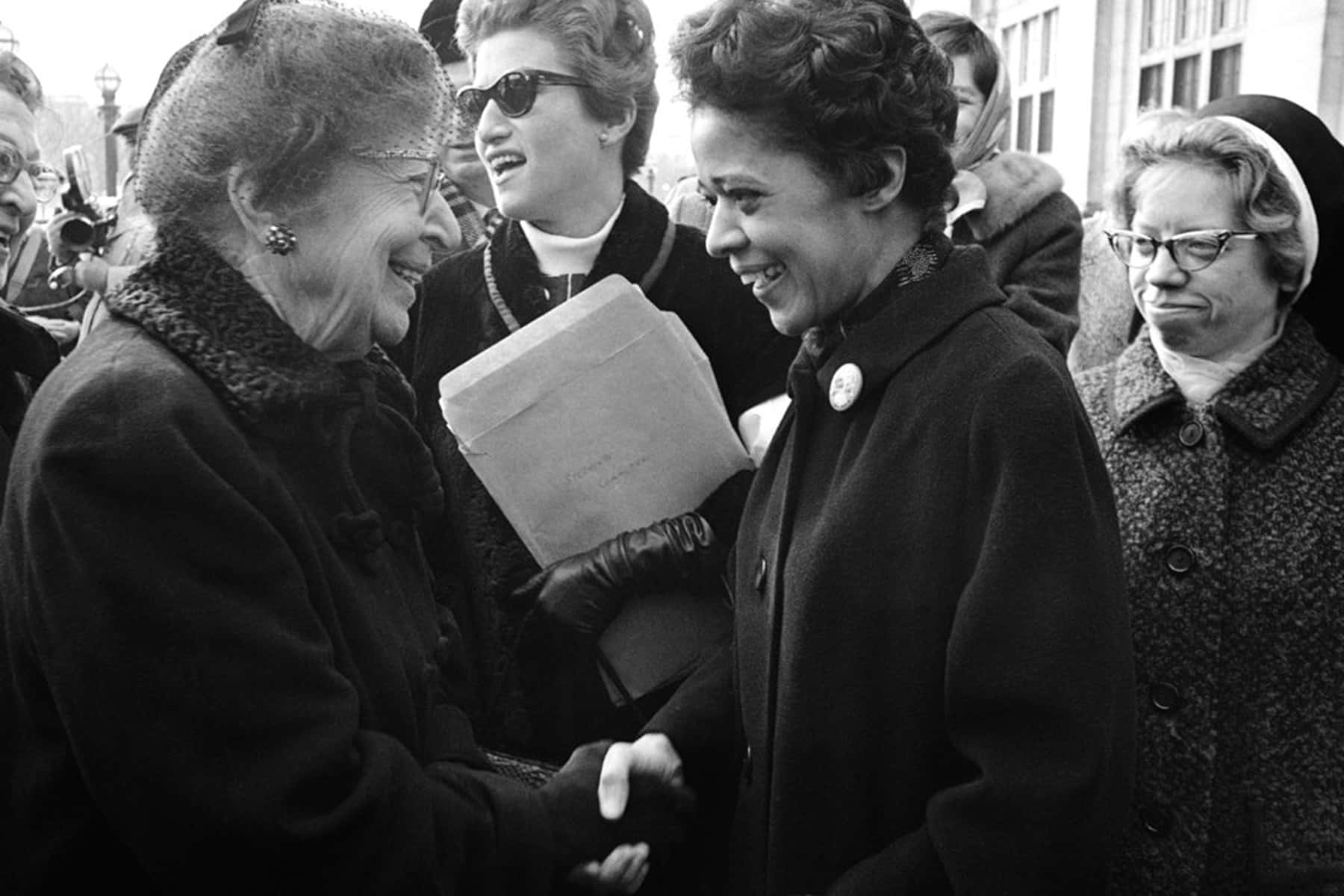
During Women’s History Month the achievements and the impact of women are recounted, and assessments of the trajectory of inclusion are reviewed. This year marks not only a milestone for women in the law in Milwaukee, but also reveals the slow but steady equitable inclusion of women – as judges, public servants, and elected officials.
Fifty years ago, then-Milwaukee Alderperson Vel Phillips resigned her office to become the first woman judge in Milwaukee County and the first African-American judge in the state of Wisconsin. Governor Lee Dreyfus appointed her to the Children’s Court (a designated appointment at the time). Years later in 2009, the Wauwatosa building in which she served as a judge would be named in her honor as the Vel R. Phillips Youth & Family Justice Center.
Five years after Phillips took the bench, Governor Patrick Lucey appointed Shirley S. Abrahamson to the Wisconsin Supreme Court, as Wisconsin’s first female justice. This distinguished law firm partner and University of Wisconsin-Madison Law School professor also would become Wisconsin’s first female chief justice (1996), an internationally recognized legal scholar, and a renowned innovator in court operations. Upon fulfilling 43 years of public service in 2019, she made the history books – not only as Wisconsin’s longest-serving justice but also as its longest-serving chief justice.
Abrahamson served as the only women justice for 17 years until Governor Thompson appointed Janine Geske (1993-1998). They were followed by Ann Walsh Bradley, the first women justice elected to the Supreme Court without first being appointed (1995-present). Currently, six of the seven Wisconsin Supreme Court justices are women.
In 2020, Wisconsin conferred honors upon the judicial trailblazers Phillips and Abrahamson. In August, the Wisconsin State Historical Society renamed and dedicated its historic Library Reading Room in honor of Chief Justice Emerita Shirley S. Abrahamson. In December, Governor Evers empaneled the Vel Phillips Statue Advisory Committee, to assist the State Capitol and Executive Residence Board.
The entities are charged with raising a Capital-grounds statue honoring Phillips’ accomplishments as a public servant in Milwaukee and as both the first African American and first women elected to a statewide, Constitutional office as Wisconsin’s Secretary of State (1978). Abrahamson died in 2020 at age 87; Phillips in 2018 at age 94. Both women served as generous mentors and treasured role models for Wisconsin women seeking legal careers and elected offices.
Phillips’ 1971 appointment occurred thirty-five years after Gov. Philip La Follette appointed Wisconsin’s first woman judge, Verle Sells of Florence County, in 1936. It would not be until 1978 that additional women would be appointed as Milwaukee County judges. After a statewide court redesign that added several Milwaukee County seats or “branches,” Governor Martin J. Schreiber appointed Patricia S. Curley (1978-1996) and Leah M. Lampone (1978-1994).
Since 1978, fourteen branches have been added to the Milwaukee County Circuit Court for a total of forty-seven. Of the fourteen, only four have been held first by a woman: two by appointment (Diane S. Sykes 1992-1999; Bonnie L. Gordon 1994-2014) and two by-election without prior appointment. (Arlene Connors 1983-1998; Louise Tesmer 1989-2001).
Since Phillips was appointed 50 years ago, 151 judges have been elected or appointed in Milwaukee County; forty-one (27%) of whom have been women and ten of whom have been women of color (7% of judges; 25% of women judges). Milwaukee County’s first elected female judge (without a prior appointment) was Arlene Connors (1983-1998), thirteen years after Olga Bennett of Vernon County was the first woman elected and sworn as a county judge in Wisconsin (without first being appointed).
During the decades of the 1990s and the 2010s Milwaukee County saw the greatest surges in women becoming judges, eleven and seventeen per decade, respectively. A distinct trend exists between these surges of women in office: an increasing number of women are pursuing public office initially by-election. During the 1990s, four of eleven (36%) women reaching the bench were elected; in the 2010s, ten of seventeen (59%) were elected. These numbers compare to a reverse trend for male judges with only three of twelve (25%) male judges first running for the bench during the 2010s, the remaining 75% first being appointed to judicial office.
Why does it matter that women serve as judges? According to the Gavel Gap, (a 2015 national report on race and gender diversity on the bench) an inclusive judiciary matters because
“[j]udges’ backgrounds have important implications for the work of courts. The characteristics of those who sit in judgment can affect the internal workings of courts as well as the external perception of courts and judges. The background of judges can influence how they make decisions and impact the public’s acceptance of those decisions.”
While Wisconsin lags in judicial gender diversity, the trajectory has taken a steep upwards slope during the last five years. In 2015 only 15.6% of Wisconsin judges were women, compared to 29.6 % in Minnesota, 27.3 % in Illinois, 25.7 % in Michigan, and 23.5 % in Iowa. According to a 2019 Wisconsin Women’s Council report, the percentage of women judges serving in this state’s circuit courts increased to 19% in 2017, and then to 26% in 2019.
Since 50 years ago when Phillips was appointed to the judiciary, thousands of more women have been admitted to the Wisconsin bar. Two of them – Katie Kegel and Susan Roth – are vying for a seat on the Milwaukee County Circuit Court in the Spring Elections on April 6, 2021. One of them will replace Judge Clare Fiorenza (1996-2021) who is not seeking re-election. This race marks the third time in ten years that two women were campaigning to replace another woman on the bench in Milwaukee. The increase in the number of women becoming lawyers and the number of those willing to run for elected office together serve as a harbinger; the trajectory of inclusion is upward and forward for the next 50 years, and beyond.
For information about the April 6, 2021 Spring Elections, registration, early voting, and polling locations check myvote.wi.gov. For ballot content, candidate’s information and candidate forum dates check www.vote411.org.
Hеnry Burrоughs and Wisconsin Hіstorіcаl Socіеty

